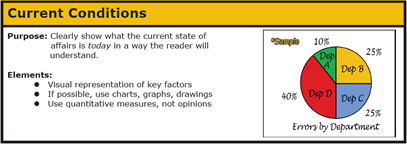
advertisement
Hotel Problems Solved Once and For All
(Part 1 of 3)
|
News for the Hospitality Executive |

advertisement
| by Jim Hartigan June 14, 2011 Today, it’s not politically correct to use the term “problems” – everyone wants to call them “issues,” or “concerns” or my favorite, “opportunities.” But, let’s face it – in the hotel business, we have problems and we need solutions. Recognizing this fact is the first step toward managerial recovery. With that, we are going to embark on a three part series designed to help you and your organization solve problems using the Orgwide Problem Solving Process. What is the Orgwide Problem Solving Process? At its core, it is a comprehensive approach to equipping hotel managers with both the process improvement skills and mentorship capabilities necessary to achieve their organizational objectives. Our process, which we refere to as O3 Problem Solving, is based upon the belief that today’s most significant organizational challenges can only be overcome by individuals and teams trained to systematically identify and solve problems. O3 leverages mentor – protégé relationships as a means of increasing the number of “problem solvers” while providing meaningful, real-world developmental opportunities for high-potential team members. O3 Mentorship is a relationship-based, operations-focused development process by which a more experienced person (mentor) helps a high-performing, high-potential team member (protégé) learn the skills needed to systematically identify and solve operational problems. O3 provides Mentors with a “framework” to guide discussions and shared learning. O3 reflects an understanding that solving problems is intrinsically rewarding and an essential requirement of an engaged workforce. In a nutshell, O3 refers to the creation of a one-page visual (drawing, charts, graphs, words, etc.) depicting a seven-step problem-solving process. Mentors use the process to guide their discussions and teaching of their Protégés. At each step, the Mentor asks questions and guides the Protégé in the discovery learning process to make better business decisions. In the process, key problems experienced at your hotel are explored, investigated, and ultimately solved. The steps of the O3 Problem Solving Process are:
 Background BackgroundIn today’s world of “get it done yesterday,” many of us are so quick to “solve” a problem that we end up only treating symptoms. This happens because a thorough understanding of a problem, while crucial to being able to solve the problem, takes time. Thus, symptoms often are treated and real problems go unsolved. The Background section of the O3 report forces you to do two things: 1) zero in on what the problem really is, and 2) document critical information others will need to understand the problem. The Background section of the O3 report must:
 Current Conditions Current ConditionsThe second section of the O3 report provides measureable information about the problem and the condition in which it occurs. Often times this includes a graphical representation of data that result from the problem (decrease in Guest Satisfaction Scores for breakfast, rise of absenteeism in Housekeeping). In addition to the problem itself, it’s important to also compare the problem area to other areas where there isn’t a problem. For example, one part of the Current Conditions section may show a detailed graph of Guest Satisfaction Scores for breakfast while another part may show the trend for lunch, dinner, and room service. If it isn’t possible to compare the problem area to a similar, problem-free area, consider summarizing the information presented in the graph in table form. After reading this section, your audience should understand the state of the problem, as it exists today and have some degree of how that is relative within the organization. Goals/Targets  Once
the reader has all the necessary information and facts to be able to
thoroughly
understand and support the current the situation, it’s time to
articulate what
you want the situation to look like after corrective actions.
This is also known as the ideal target state,
and it must be as specific as possible. Once
the reader has all the necessary information and facts to be able to
thoroughly
understand and support the current the situation, it’s time to
articulate what
you want the situation to look like after corrective actions.
This is also known as the ideal target state,
and it must be as specific as possible. The measures of success (or other means of evaluation) you will use to determine whether or not the ideal target state is achieved should also be included in this section. After reading this section, your audience should be able to tell where you want to go and how you’ll know when you get there. We’re off to the races now! We’ve identified our problem, shown the current state of affairs as compared to other problem-free areas, and articulated nirvana – or at least the target for our eventual actions. The heavy lifting begins with Step Four (4), Analysis. Why? That’s right; now ask it four more times. Huh? You say. We’ll explain the “5 Why’s” of the Analysis stage next week. Until then, remember take care of the customer, take care of each other, and take care of yourself.  About the Author: Jim Hartigan, Chief Business Development Officer and Partner joined OrgWide Services, a Training/e-Learning, Communications, Surveys and Consulting firm in April 2010 after nearly 30 years experience in the hospitality industry, including the last 18 as a senior executive with Hilton Worldwide. Jim’s last position was that of Senior Vice President – Global Brand Services where he provided strategic leadership and business development and support to the $22B enterprise of 10 brands and more than 3,400 hotels in 80 countries around the world. His team was responsible for ensuring excellence in system product quality, customer satisfaction, market research, brand management, media planning, and sustainability. |
| Contact: Jim Hartigan Chief Business Development Officer & Partner OrgWide Services 165 N. Main Street, Suite 202 Collierville, TN 38017 office: 901.850.8190 Ext. 230 mobile: 901.628.6586 [email protected] www.orgwide.com |